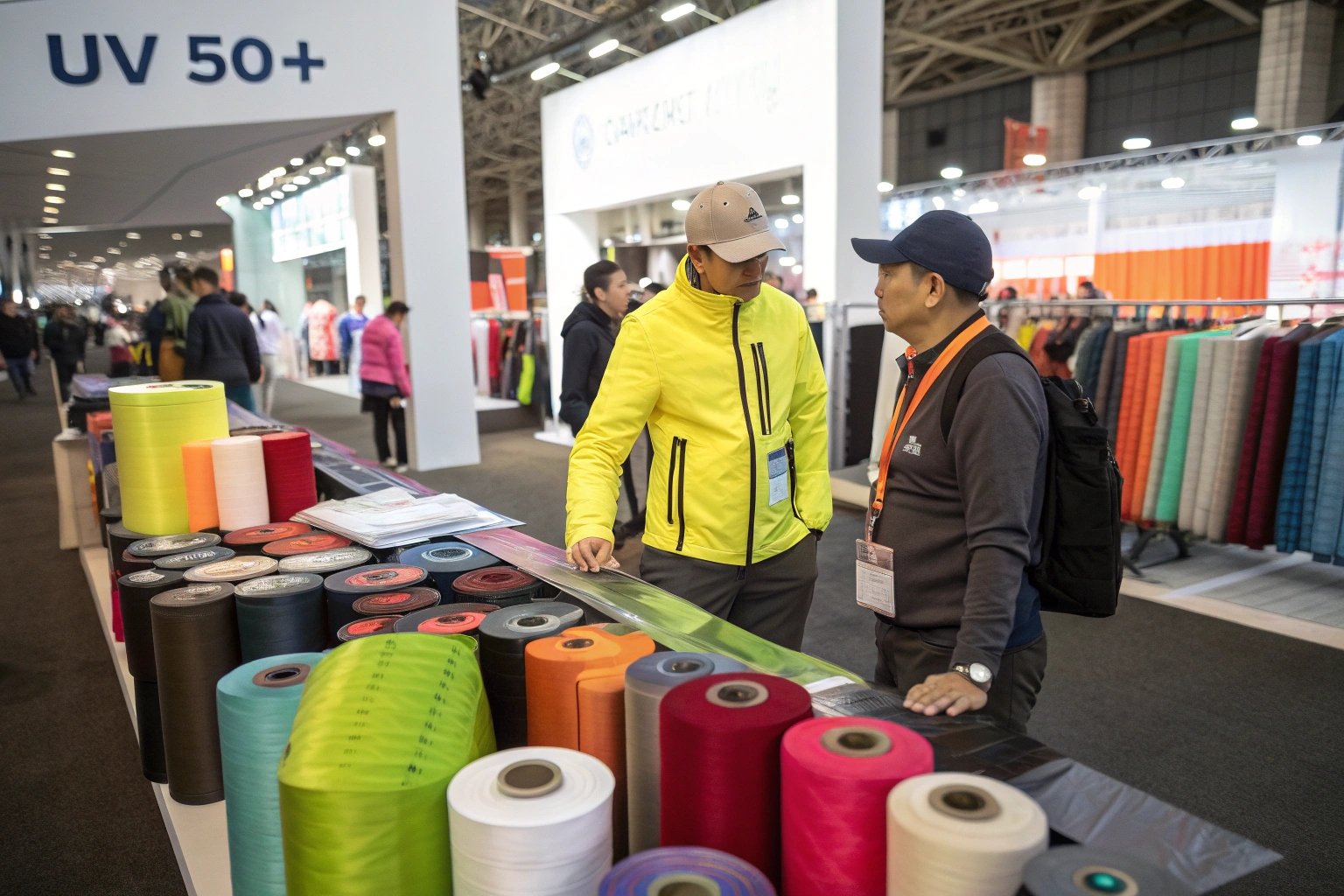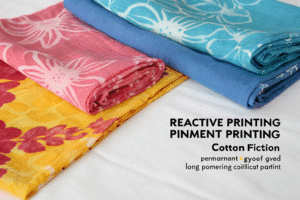Outdoor apparel brands increasingly demand UV 50+ sun protective fabrics to meet both performance standards and customer safety. As climate conditions intensify and awareness of skin cancer grows, fabric buyers must understand not just SPF marketing—but true UPF-certified textile sourcing.
UV 50+ rating means the fabric blocks at least 98% of harmful ultraviolet rays—critical for hiking gear, fishing shirts, UV umbrellas, kidswear, and desert military uniforms. But where can brands reliably source these fabrics, especially in small MOQ or custom colors?
In this article, I’ll guide you through the fiber types, coating technologies, certifications, and sourcing platforms best suited for UV-resistant fabrics—especially when buying from China.
What Makes a Fabric UV 50+ Rated?
To earn a UV 50+ rating, a fabric must demonstrate excellent ultraviolet protection factor (UPF) through standardized lab testing, such as AATCC 183 or AS/NZS 4399.
It’s not about how thick or dark a fabric looks—it’s about the structure, fiber content, and added treatments.
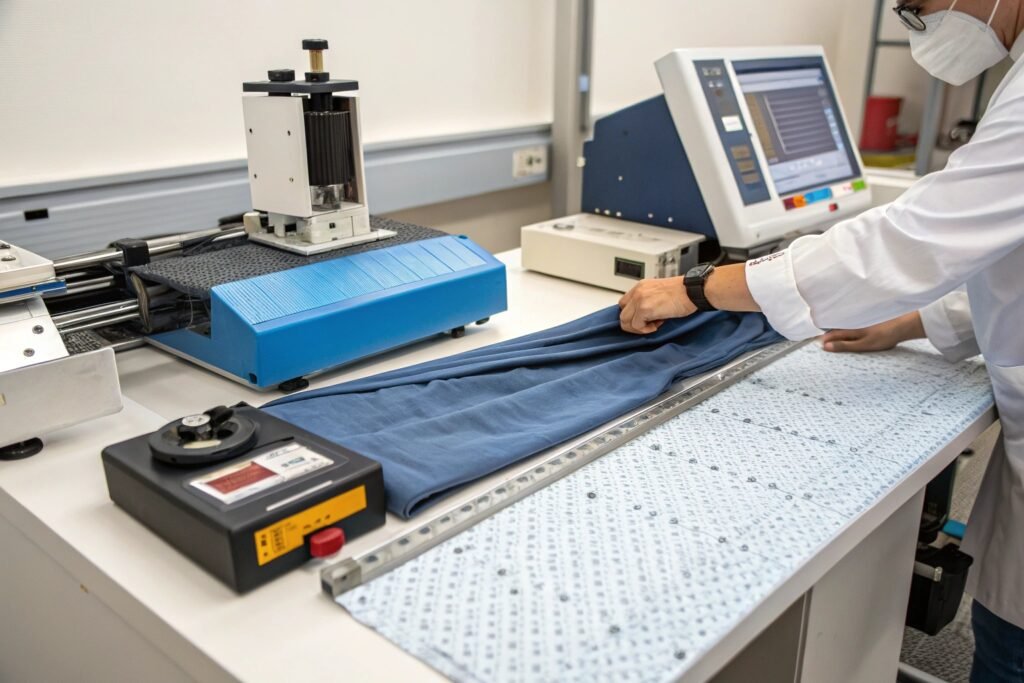
What Fabric Types Naturally Resist UV?
Certain fibers naturally block UV rays due to their dense molecular structure. For example:
| Fiber Type | UV Resistance | Notes |
|---|---|---|
| Polyester | Excellent | Common in sportswear |
| Nylon | Good | But degrades in sunlight |
| Bamboo | Moderate | Often blended for comfort |
| Wool | Naturally high | Less used in summer wear |
Brands like Coolibar and Solbari often rely on polyester blends and UPF-certified finishes to achieve their protection claims.
How Do Coatings Enhance Sun Protection?
UV 50+ performance can also be achieved with chemical finishes—like titanium dioxide or zinc oxide particles—that scatter UV rays. These can be added during:
- Fiber spinning (solution-dyeing)
- Yarn coating
- Fabric surface treatment (spray or immersion)
Some suppliers also use microdenier weaves that create tighter constructions. UV coatings are often combined with moisture-wicking and quick-dry technologies for all-day outdoor wear.
What Certifications Prove UV Protection Is Legit?
Don’t just trust a label that says “UV 50+.” Ask for test reports and certification numbers to confirm claims. Professional sourcing requires documented proof.
The most recognized certifications for sun protective fabrics include AATCC, AS/NZS, and OEKO-TEX UV standards.
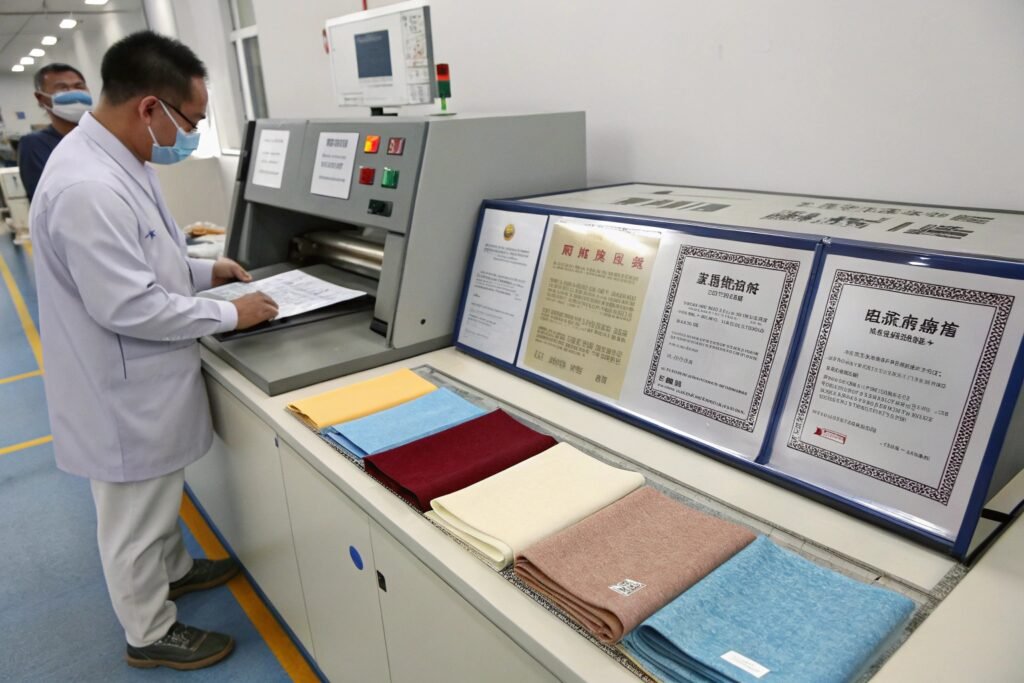
What’s the Difference Between UPF and SPF?
SPF refers to lotions or sunscreen—how long you can stay in the sun without burning. UPF, on the other hand, measures fabric protection, showing how much UV radiation can pass through the material.
Most buyers working with international supply chains rely on AATCC 183 (American Association of Textile Chemists and Colorists) for lab tests, or AS/NZS 4399 (Australia/New Zealand standard), widely used in outdoor sportswear. Check with your lab like Intertek for full compliance testing.
Are There Eco-Friendly UV Fabric Certifications?
Yes. OEKO-TEX and GRS (for recycled yarns) now include UV exposure and toxicity screening in their extended scopes.
For instance, Schoeller Textiles integrates bluesign-approved UV coatings into their sustainable performance fabrics. As a buyer, you can request fabrics that block UV and meet environmental regulations in one go.
Where Are the Best Places to Source UV 50+ Fabrics?
China’s textile hubs like Keqiao (our base), Shengze, and Guangzhou offer deep sourcing for coated, laminated, and engineered UV-resistant fabrics. Many manufacturers hold test reports and export to brands in the U.S., EU, and Australia.
From Alibaba to certified B2B networks, there are multiple ways to connect with quality UV fabric factories.
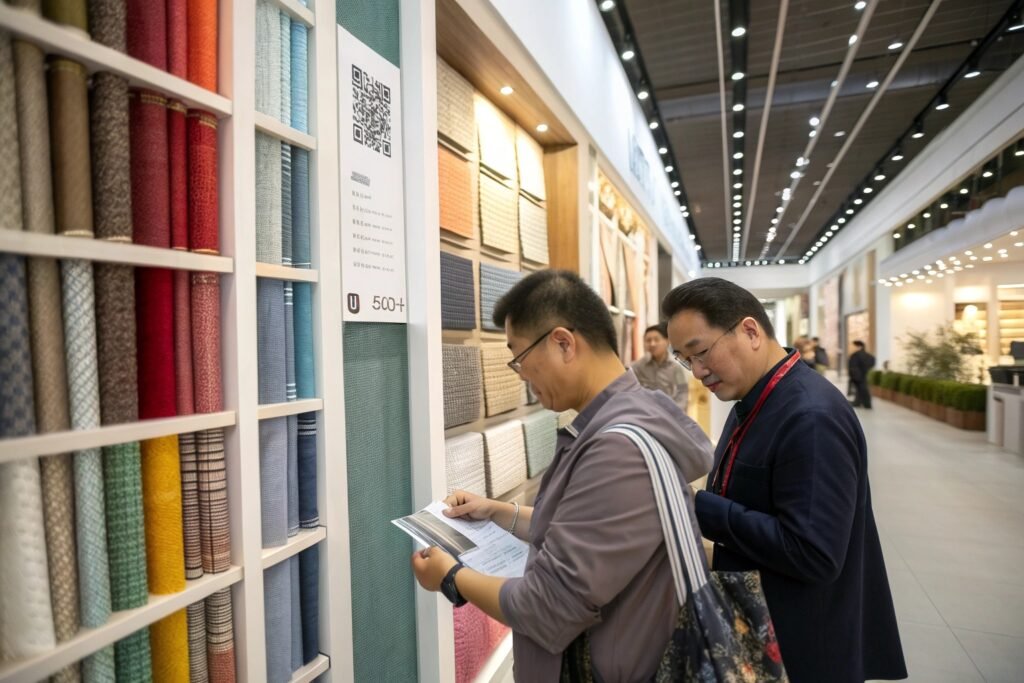
Can I Find Reliable Suppliers on Alibaba?
Yes, but you must filter by certification type, buyer history, and trade assurance. Search for “UV 50+ polyester fabric” and look for suppliers with AATCC or SGS reports listed in their profile.
Use tools like Alibaba Verified Supplier and sort by UV-treated category. Contact vendors directly for test reports and MOQ options.
Are There Specialist Chinese Suppliers Outside of Alibaba?
Absolutely. Many performance textile factories in Keqiao work outside Alibaba and operate on Google, LinkedIn, or sourcing fairs like Intertextile Shanghai. We at Fumao Fabric, for example, hold UV 50+ test reports and provide live QR-traceable QC for buyers worldwide.
We also offer custom color dyeing, reflective UV coatings, and low-MOQ stock rolls for startups.
How to Choose the Right UV Fabric for Outdoor Use?
Once you’ve found a supplier, you need to match the fabric spec with end-use. Not all UV 50+ fabrics behave the same in real outdoor environments.
Consider fabric weight, breathability, stretch, and moisture control in addition to UV rating.
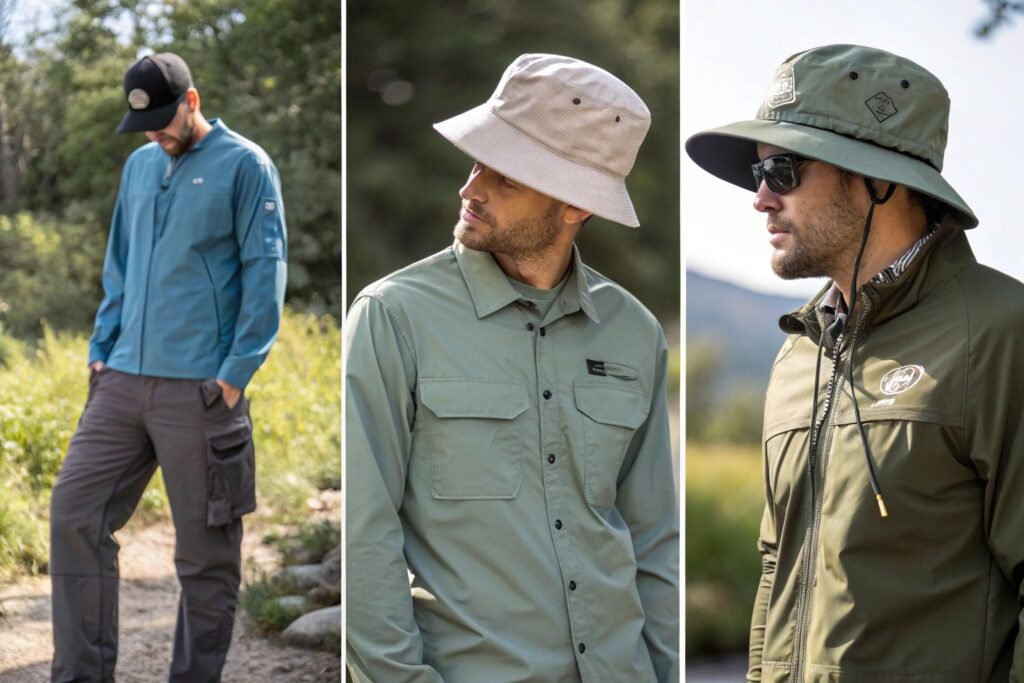
Should I Choose Knits or Wovens for UV Protection?
Woven fabrics like ripstop, poplin, or microfiber polyester offer higher mechanical resistance and tighter weave, making them great for jackets, tents, or cargo pants. Knits—like jersey or pique—are stretchier and suited for activewear or t-shirts.
Many brands use double-faced knits with embedded UV coatings for sportswear. These provide comfort and durability with UV resistance baked into the fiber structure.
What Other Features Pair Well with UV Fabric?
When sourcing UV-protective fabrics, look for dual functions like:
- Moisture-wicking (e.g. COOLMAX tech)
- Anti-bacterial coating
- Stretch and recovery
- Colorfastness to sunlight
Suppliers like Polartec and ourselves offer dual-certified fabrics that meet UV + thermal/moisture specs. Always ask for a spec sheet + test report bundle during sampling.
Conclusion
Sourcing UV 50+ sun protective fabric is no longer just a trend—it’s a must for brands in outdoor apparel. Whether you’re designing for desert sports, hiking, or protective uniforms, verified UV fabrics enhance safety and product quality.
From technical knits to coated polyesters, and from AATCC-certified Chinese suppliers like Fumao Fabric to global textile fairs, you now know exactly where and how to source smart. With real-time test reports, virtual swatchrooms, and low MOQ options, even small brands can compete at the performance level.

